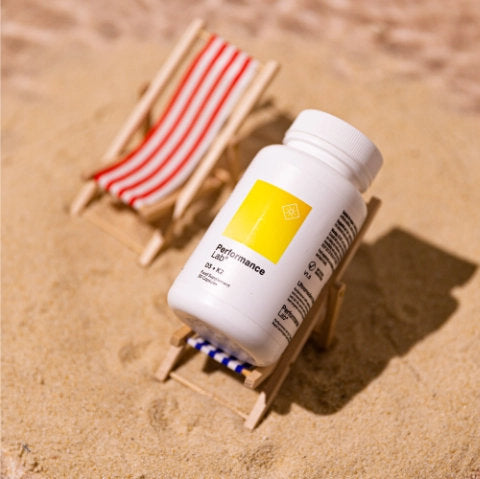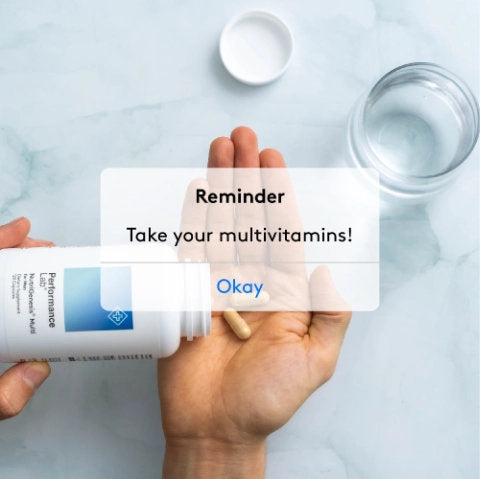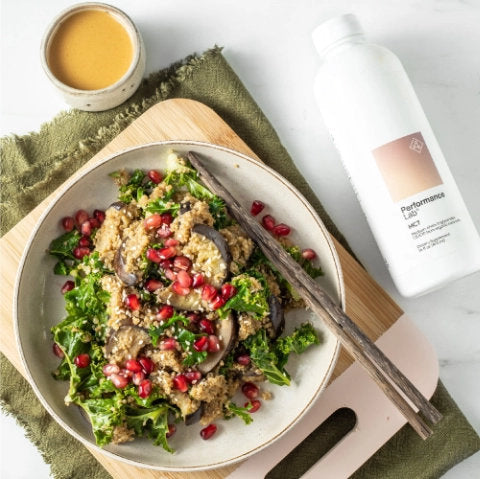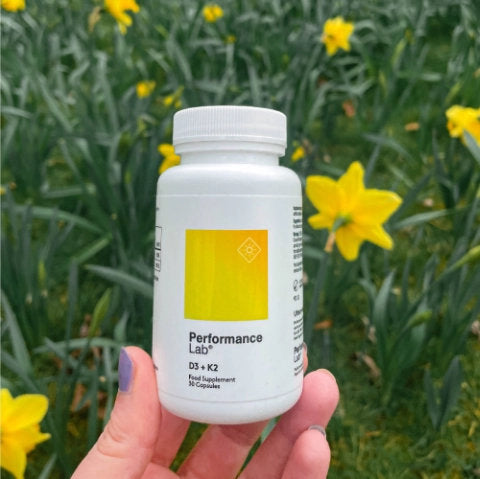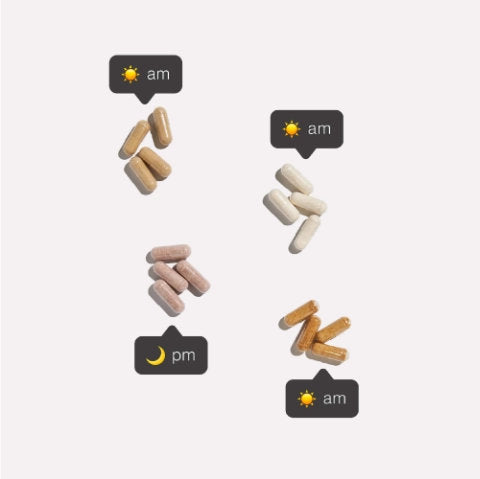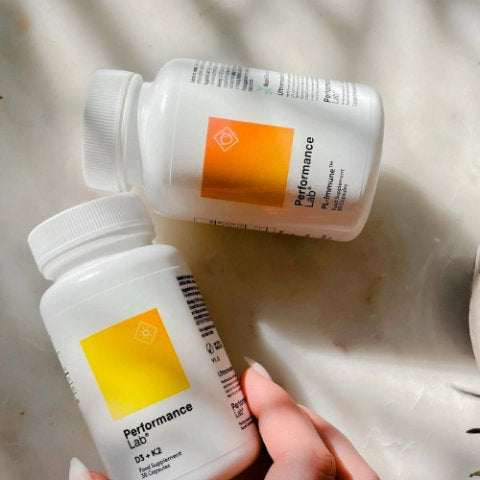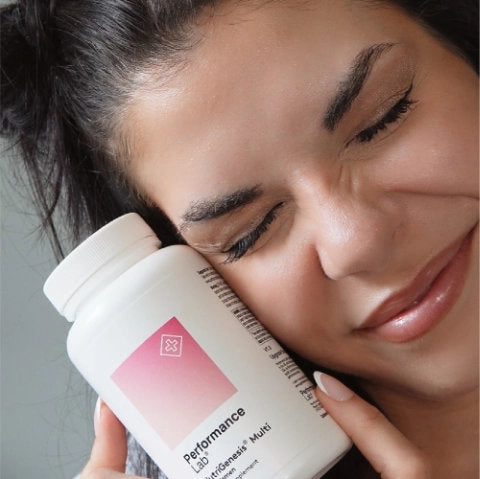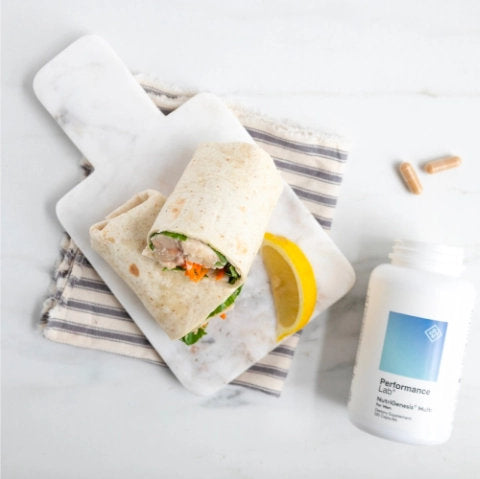You may be familiar with turmeric in your favorite curry dish, but this powerful little gem of a spice offers more than just a deep golden color and a pungent earthy taste.
Turmeric has been used for centuries in Indian culture as a staple for cooking and clothing dyes, but it also possesses some rich medicinal properties that make it a staple in many Eastern medicine practices.
If you’ve heard about turmeric before, you’ve likely heard it linked to inflammation. And because inflammation is an underlying pathology for a long list of chronic diseases, adding turmeric to your daily supplement stack could help protect your body and keep inflammation at bay.
Not sure where to start? We’re talking about the role of turmeric and inflammation, and how much you need to take to cash in on its powerful anti-inflammatory benefits.
What Is Turmeric And Why Take It?
As we said, turmeric is a root that resembles ginger root from the outside, but contains a deep golden yellow interior with a rich and earthy flavor. And while it’s been used in Indian culture for flavoring and color for centuries, as well as Ayurvedic medicine, only now are we catching on the powerful medicinal value this root holds.
While you’ll hear a lot about turmeric for several diseases, it’s actually one compound specifically that we’re looking at where health is concerned—curcumin.
Curcumin is a polyphenol and is the primary, but not the only, bioactive component of turmeric that exhibits a wide range of biological actions, including 1:
- Anti-inflammatory
- Antioxidant
- Anticarcinogenic
- Anticoagulant
- Antidiabetic
- Antibacterial/antifungal/antiprotozoal/antiviral
- Antifibrotic
- Hypotensive
- Hypocholesteremic activities
Among those, its anti-inflammatory properties hold a lot of value where chronic diseases are concerned. It’s been shown to support the management of oxidative and inflammatory conditions, metabolic syndrome, arthritis, anxiety, and hyperlipidemia, and may also help with exercise-induced inflammation and muscle soreness, thereby enhancing recovery and performance in highly active individuals 2.
Turmeric for Inflammation
The antioxidant and anti-inflammatory properties of curcumin are the two primary mechanisms that explain most of the effects of this potent spice.
Oxidative stress refers to a condition whereby the generation of reactive oxygen species (ROS) exceeds the capacity of the body’s antioxidant system to neutralize and combat them.
In such a case, oxidative stress levels become elevated, which have been implicated in several chronic diseases. These pathological processes are closely linked to inflammation, whereby one can easily induce another 2.
Studies actually show that inflammatory cells release a number of reactive species at the site of inflammation, which ultimately leads to oxidative stress 3.
Additionally, we also have the role of reactive oxygen/nitrogen species that can stimulate intracellular signaling cascade to enhance the expression of pro-inflammatory genes.
Tumor necrosis factor α (TNF-α) is one of the major mediators of inflammation in most chronic diseases, and this effect is regulated by the activation of a transcription factor, nuclear factor (NF)-κB 2. It’s suggested that TNF-α is the most powerful activator of NF-κB, but the expression of TNF-α is also regulated by NF-κB.
What’s more, NF-κB can also be activated by most inflammatory cytokines; gram-negative bacteria; disease-causing viruses; environmental pollutants; chemical, physical, mechanical, and psychological stress; high glucose levels; fatty acids; UV radiation; cigarette smoke; and other disease-causing factors 2, all of which contribute to increased levels of inflammation.
As such, compounds that function to downregulate NF-κB and NF-κB–regulated gene products can be protective against the development of inflammation and subsequent inflammatory-based diseases.
That’s where curcumin comes into the picture. It’s been shown to block NF-κB activation, as well as alleviate oxidative stress and inflammation in chronic diseases through the Nrf2-keap1 pathway 2, 4.
How Much Should I Take?
Despite curcumin’s promise for treatment and prevention of several inflammatory-based diseases, its effects are hindered by poor absorption, rapid metabolism, short biological half-life, and low oral bioavailability (only 1% in rats) 4.
Studies suggest that very high doses (>3.6 g/day in humans) are required to produce any medicinal effect 5. However, its poor bioavailability can be improved by adding a bioavailability enhancer like piperine, the active component of black pepper, which has been shown to increase curcumin bioavailability by up to 2000% 3.
But in terms of how much you need for beneficial effects, curcuminoids have been approved by the US Food and Drug Administration (FDA) as “Generally Recognized As Safe” and exhibit good tolerability and safety profiles, even at doses exceeding 4000mg/day 6.
So, how much is enough to reap its potent anti-inflammatory benefits?
According to JECFA (The Joint United Nations and World Health Organization Expert Committee on Food Additives) and EFSA (European Food Safety Authority, recommended intake of curcumin for optimal benefits is 0–3 mg/kg body weight 7.
Several studies have also confirmed this, but despite having well-established safety, some adverse effects have been noted at higher doses. One study found that 500-12,000mg may cause diarrhea, headache, rash, and yellow stool, whereas another study found that diseases of 0.45 to 3.6 g/day of curcumin caused nausea and diarrhea, as well as increases in serum alkaline phosphatase and lactate dehydrogenase 5, 8.
With that said, experts suggest that the typical dosage for relief from inflammation ranges between 400 and 600 mg, but can also be given at 500 mg, twice daily for favorable effects. However, do not exceed 2,000mg per day.
And if you want the best of the best, we have it.

Performance Lab Flex offers the most comprehensive joint-support formula containing 250mg of CurcuWIN® curcumin—an ultramodern nutritional innovation that makes curcumin 46X more absorbable.
CurcuWIN® is also standardized to 20% curcuminoids in turmeric-identical ratios for optimal joint support, less inflammation, and better performance day in and day out.
References
- I Chattopadhyay, K Biswas, U Bandyopadhyay, RK Banerjee. Turmeric and curcumin: Biological actions and medicinal applications. Current Science. 2004;87(1):44-53.
- SJ Hewlings, DS Kalman. Curcumin: A Review of Its Effects on Human Health. 2017;6(10):92.
- SK Does the Interdependence between Oxidative Stress and Inflammation Explain the Antioxidant Paradox?. Oxid Med Cell Longev. 2016;2016:5698931.
- Y He, Y Yue, X Zheng, K Zhang, S Chen, Z Du. Curcumin, inflammation, and chronic diseases: how are they linked?. 2015;20(5):9183-9213.
- RA Sharma, SA Euden, SL Platton, et al. Phase I clinical trial of oral curcumin: biomarkers of systemic activity and compliance. Clin Cancer Res. 2004;10(20):6847-6854.
- P Basnet, N Skalko-Basnet. Curcumin: an anti-inflammatory molecule from a curry spice on the path to cancer treatment. 2011;16(6):4567-98.
- B Kocaadam, N Şanlier. Curcumin, an active component of turmeric (Curcuma longa), and its effects on health. Crit Rev Food Sci Nutr. 2017;57(13):2889-2895.
- CD Lao, MT Ruffin 4th, D Normolle, et al. Dose escalation of a curcuminoid formulation.BMC Complement Altern Med. 2006;6:10.

